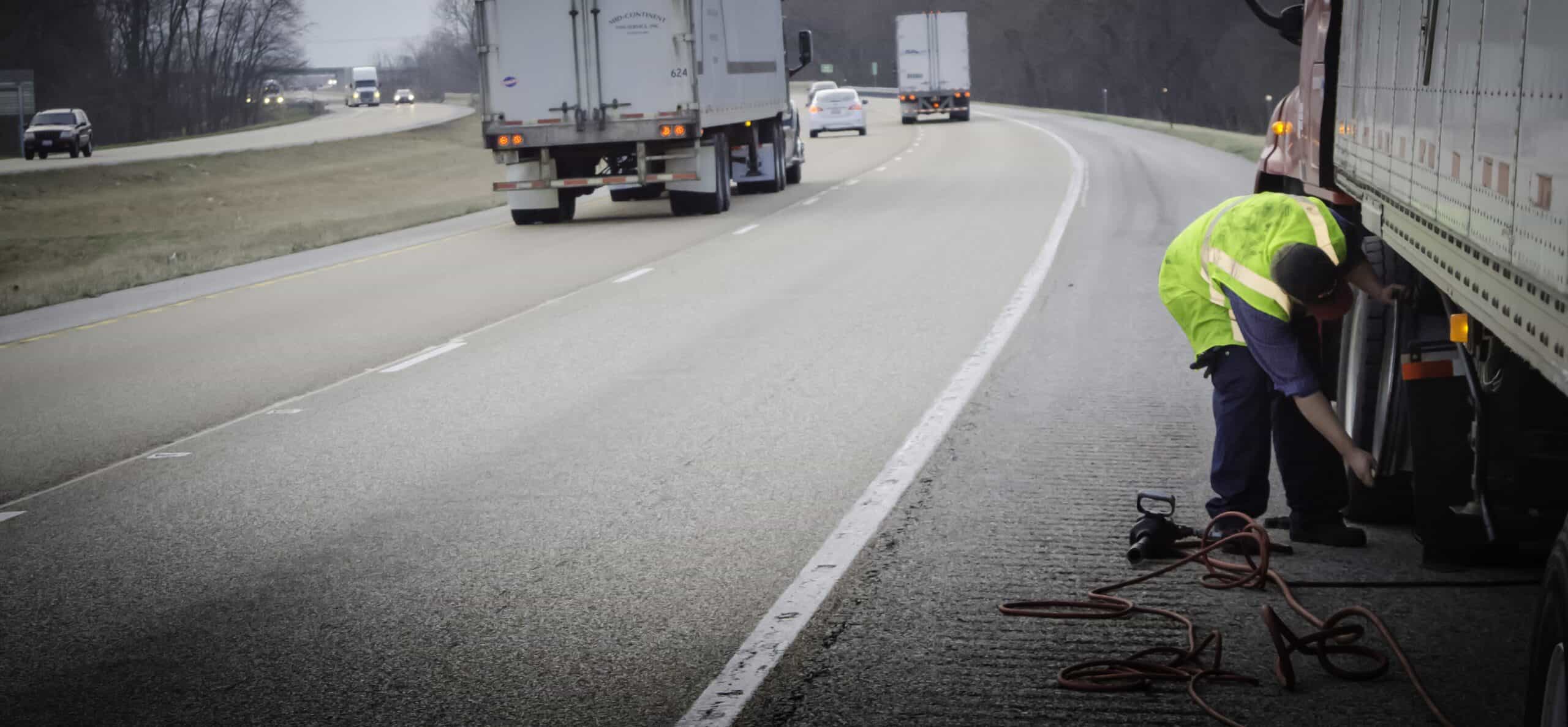From ensuring driver safety to mitigating financial liabilities, implementing an effective fleet risk management program is crucial to businesses operating commercial truck fleets.
This article offers insights and practical strategies to help companies proactively address and mitigate risks. Keep reading for tips on enhancing the safety, efficiency, and overall performance of your fleet.
And when you’re done, read more in our ‘Getting the most out of your fleet’ article series:
- What is fleet management, and how is it implemented?
- How to increase fleet utilization rates
- Benefits of a fleet risk management program
What is fleet risk management?
Fleet risk management is a critical component of overall fleet management strategies. It involves identifying, assessing, and implementing risk mitigation strategies to reduce potential harm to commercial fleets, like collisions, vehicle breakdowns, and driver errors.
The most commonly used tools for this process are fleet telematics systems and risk management solutions, which help in monitoring driver behavior, vehicle health, and regulatory compliance.
Fleet telematic systems
Truck telematics are a key asset in fleet risk management as they provide valuable data on driver behavior, vehicle status, and operations. With driver behavior monitoring, fleet managers can track risky habits like speeding, harsh braking, or sudden acceleration. These insights can then be used to implement training or safety programs, leading to improvement in productivity and safer driving practices.
Risk management solutions
Risk management systems aid in evaluating potential risks and creating a response plan. For instance, these might include insurance and risk management strategies that help cover costs in case of unforeseen incidents. Insurance management solutions, like an insurance policy management system, are often used in conjunction to manage policies, claims, and coverage effectively.
Regulatory compliance software
One of the significant risks involved in fleet operations is compliance with regulatory standards. Regulatory compliance solutions help businesses adhere to relevant laws and regulations, ranging from emissions standards to driver background checks. This, in turn, protects the company from legal repercussions and helps maintain its reputation.
Main risks to commercial truck fleets
The main risks to commercial fleets are numerous and can have severe operational impacts if not appropriately managed. These risks range from operational hazards like accidents and mechanical breakdowns, to legal issues related to regulatory compliance and insurance claims.
One primary risk is related to driver behavior. Unsafe driving practices can lead to accidents and damage to vehicles. Driver behavior monitoring is an essential component of fleet risk management, helping to identify risky practices like speeding, harsh braking, and erratic driving.
Another significant risk comes from non-compliance with vehicle safety regulations. Fleet regulatory compliance involves adhering to laws and standards set by governing bodies, such as emissions compliance and adherence to fatigue management policies. FMCSA compliance solutions can help fleet managers stay on top of these regulations.
Insurance-related issues pose another risk. Failure to effectively manage insurance policies can lead to uncovered losses in the event of an accident or vehicle breakdown. Insurance management solutions or an insurance policy management system can be game-changers for fleet managers.
Benefits of implementing a fleet risk management program
Fleet risk management solutions bring many valuable benefits to businesses operating commercial fleets. The following list highlights the top advantages:
- A fleet management policy that includes the implementation of a driver behavior monitoring system increases safety, reduces vehicle downtime due to collisions or maintenance, and can lead to an employee productivity improvement.
- Conducting a fleet risk assessment can effectively identify and mitigate potential risks, leading to fewer incidents and lower costs.
- Fleet telematics solutions provide real-time operational information, improving decision-making and response times.
- Regulatory risks are mitigated through regulatory compliance management software, ensuring adherence to all relevant laws while protecting the company from legal issues.
- The program supports efficient claims management resources, simplifying and accelerating the claims process in the event of an accident.
- Appointing claims management resources as part of a can expedite the process of receiving compensation after an accident, reducing downtime and financial losses.
- An effective fleet risk management strategy can provide reputation protection by demonstrating a company’s commitment to safety and compliance. Reputation based protection helps to attract and retain customers.
- Finally, implementing an insurance management solution and appointing a claims management resource as part of fleet a risk mitigation strategy can reduce potential fines, accidents, and other unforeseen events.
9 tips for implementing a fleet risk management program
Establishing a fleet management program involves a systematic approach to identify, assess, and mitigate potential risks associated with fleet operations. Here are some smart implementation strategies:
- Appoint a risk management team: Create a dedicated team or designate individuals responsible for overseeing the risk management program. This team should have representatives from various departments, such as fleet operations, safety, HR, legal, and finance.
- Identify and assess risks: Conduct a comprehensive risk assessment to identify potential risks specific to your fleet operations. These may be related to driver safety, vehicle maintenance, regulatory compliance, weather conditions, traffic patterns, etc. Evaluate the likelihood and potential impact of each risk.
- Develop risk mitigation strategies: Once risks are identified, develop strategies to mitigate them. This can involve implementing policies, procedures, and controls to address identified risks. For example, establish driver safety training programs, maintenance schedules, and monitoring systems for driver behavior and vehicle performance.
- Create fleet safety policies and procedures: Develop and implement clear and comprehensive fleet safety policies and procedures. These should cover aspects such as driver qualifications, vehicle inspection processes, accident reporting protocols, and disciplinary actions for non-compliance.
- Provide continuous training: Provide ongoing driver training and education programs to promote safe driving practices.
- Use technology and telematics: Vehicle telematics systems, GPS tracking, and driver monitoring tools gather data and insights on driver behavior, vehicle performance, and overall fleet operations.
- Track insurance and legal compliance: Ensure your fleet is adequately covered by insurance policies that address the specific risks associated with fleet operations. Stay up-to-date on all relevant regulations.
- Incident reporting and investigation: Establish a clear process for incident reporting and investigation. Promptly investigate collisions, near misses, and any safety-related incidents to implement corrective actions.
- Promote safety: Foster a culture of safety within the organization by promoting awareness, accountability, and continuous improvement. Encourage open communication channels among all employees.
Fleet risk management is a commitment worth making
Effective risk management is a critical aspect of overall fleet vehicle operations and contributes to the long-term success of any business with commercial trucks. But keep in mind that it’s an ongoing process. Regularly review and refine your strategies based on feedback, new technologies, and industry best practices to ensure the safety and efficiency of your truck fleet.
FAQ
Fleet insurance coverage refers to an insurance policy specifically designed to provide coverage for a company’s fleet of vehicles. It typically offers protection against risks such as accidents, damage, theft, and liability, ensuring that the company’s vehicles and operations are financially protected.
They can be, as they provide valuable insights into driver behavior, vehicle performance, and fleet operations. Fleet telematic solutions enable real-time monitoring, improve safety, optimize routes, enhance fuel efficiency, and help in reducing maintenance costs, ultimately leading to increased productivity and cost savings.
It’s a technology solution that tracks and monitors the behavior and performance of truck drivers. It typically uses telematics devices, sensors, and software to collect data on various parameters such as speed, braking, acceleration, and adherence to safety regulations. This information is then analyzed to identify areas for improvement and ensure compliance with safety standards and regulations.



